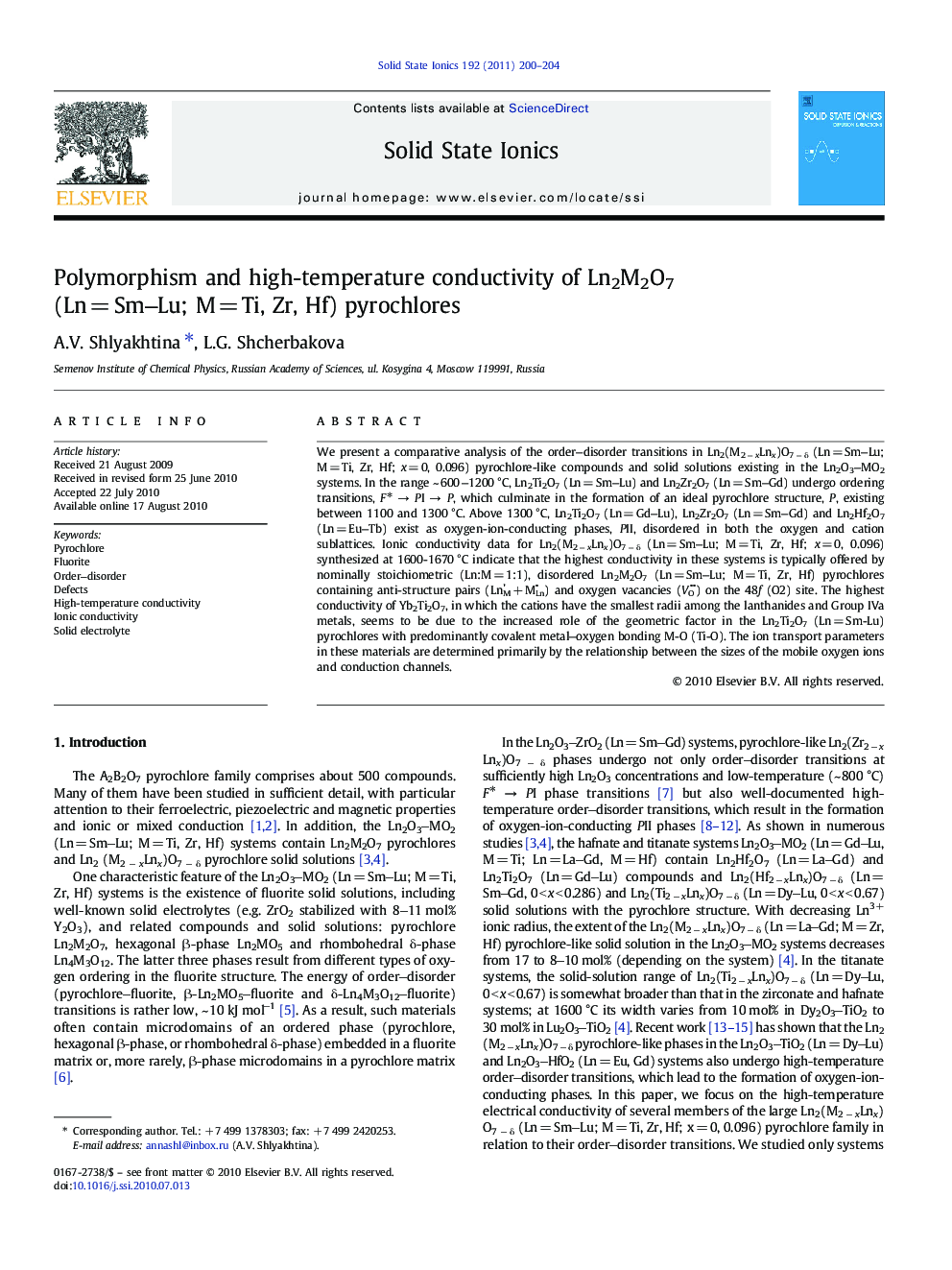| Article ID | Journal | Published Year | Pages | File Type |
|---|---|---|---|---|
| 1296449 | Solid State Ionics | 2011 | 5 Pages |
We present a comparative analysis of the order─disorder transitions in Ln2(M2 ─ xLnx)O7 ─ δ (Ln = Sm─Lu; M = Ti, Zr, Hf; x = 0, 0.096) pyrochlore-like compounds and solid solutions existing in the Ln2O3─MO2 systems. In the range ~ 600─1200 °C, Ln2Ti2O7 (Ln = Sm─Lu) and Ln2Zr2O7 (Ln = Sm─Gd) undergo ordering transitions, F⁎ → PI → P, which culminate in the formation of an ideal pyrochlore structure, P, existing between 1100 and 1300 °C. Above 1300 °C, Ln2Ti2O7 (Ln = Gd─Lu), Ln2Zr2O7 (Ln = Sm─Gd) and Ln2Hf2O7 (Ln = Eu─Tb) exist as oxygen-ion-conducting phases, PII, disordered in both the oxygen and cation sublattices. Ionic conductivity data for Ln2(M2 ─ xLnx)O7 ─ δ (Ln = Sm─Lu; M = Ti, Zr, Hf; x = 0, 0.096) synthesized at 1600-1670 °C indicate that the highest conductivity in these systems is typically offered by nominally stoichiometric (Ln:M = 1:1), disordered Ln2M2O7 (Ln = Sm─Lu; M = Ti, Zr, Hf) pyrochlores containing anti-structure pairs (LnM' + MLn•) and oxygen vacancies (VO••) on the 48f (O2) site. The highest conductivity of Yb2Ti2O7, in which the cations have the smallest radii among the lanthanides and Group IVa metals, seems to be due to the increased role of the geometric factor in the Ln2Ti2O7 (Ln = Sm-Lu) pyrochlores with predominantly covalent metal─oxygen bonding M-O (Ti-O). The ion transport parameters in these materials are determined primarily by the relationship between the sizes of the mobile oxygen ions and conduction channels.
